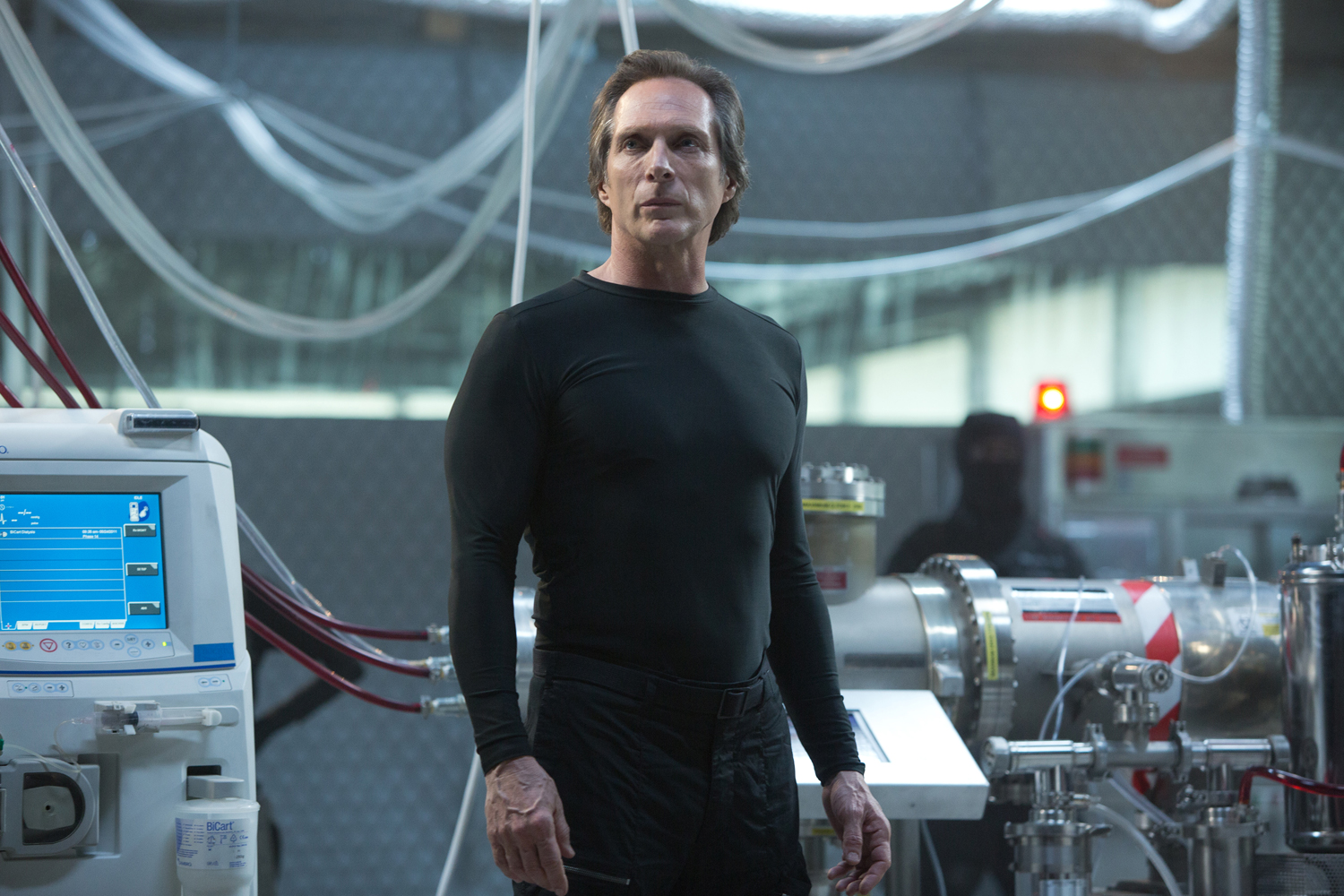REVIEW: 'Teenage Mutant Ninja Turtles'
Expectations shouldn’t be high for Teenage Mutant Ninja Turtles. Director Jonathan Liebesman’s previous blockbuster, Battle: Los Angeles, is a 116-minute assault of Hollywood war clichés that never manages to hit any emotional notes.
With Michael Bay as producer, the new TMNT movie’s fate as a vehicle for product placement and propagandist showings of male chauvinism by objectifying women – something that even Bay’s worst critics have to agree he’s mastered – was sealed. So, there really wasn’t a whole lot going for Ninja Turtles to begin with, though it will certainly make a lot of money, as Bay’s films tend to do.
As is typical with mindless, escapist summer blockbusters, it thrives on simple characters and convenient plots. In the newest rendition of the Turtles, the criminal Foot Clan is no longer an ancient brotherhood of ninjas, but a modern, well-funded terrorist group with enough guns to make a Rambo film jealous. Enter April O’Neil (Megan Fox), an enterprising and feisty Channel 6 reporter, who interferes with the Foot Clan’s devious plans and unsurprisingly gets caught. Of course, she’s saved by the Turtles – Leonardo, Raphael, Donatello and Michelangelo – and eventually befriends them.
In a master stroke of genius storytelling and plot development, it’s later revealed the Turtles were a product of Project Renaissance, a super-secret science experiment that April’s late father worked on with not-so-nice-guy Eric Sacks (William Fichtner). Sacks turns out to be secretly on the Foot Clan’s payroll, and intends to create a chemical weapon to hold the city for ransom.
In yet another bizarre twist (and complete oversight on the Foot Clan’s part), the antidote to the chemical weapons can only be made from the mutated blood in the Turtles. The Foot Clan raid the Turtles’ sewer lair and capture three of them before April and Raphael stage a rescue mission with hapless cameraman Vernon Fenwick (Will Arnett), who tags along for comic relief. The movie finishes off with a final fight between the reunited Turtles and the Shredder, the Foot Clan’s leader, atop a skyscraper.
In Bay’s hands, the action sequences with the Turtles felt really fresh, exciting and had a level of intensity that just wouldn’t have been possible with the classic Jim Henson puppets. But all of the action provides nothing to suggest that the Turtles know anything or have anything to do with ninjas. The roided-up Turtles are bulletproof, for crying out loud, which really makes sneaking around in the shadows like actual ninjas rather unnecessary, and kind of misses one of the unique points about the Ninja Turtles.
The Shredder and Splinter, the Turtles’ anamorphic rat mentor, are relegated to bit parts because so much was changed from the original source material, and consequently they become far less compelling characters. Even the backdrop of iconic New York, which is central to the Turtles’ existence in previous versions - with their New York accents (especially Raphael) and affinity for New York-style pizza - is completely glossed over. The setting lacked as much substance as the human characters, and that’s not a good thing.
This type of action film plot fodder is tailor made for Bay, and the ideals of sacrifice, brotherhood and coming of age that pervade all Ninja Turtles films work well in his hands, having had plenty of practice with Bad Boys, Armageddon and Pearl Harbor.
Despite all this initial slugging of Liebesman and Bay, I have to say that I enjoyed the film, but purely for nostalgic reasons. I’ve been a lifelong fan of the Ninja Turtles, but I can’t tell you exactly why I like them so much and what the appeal really is. How did a one-shot comic, which parodied Marvel’s Daredevil with an original print run of less than 4,000 copies, become worth hundreds of millions of dollars? Maybe it’s the goofiness of having four anamorphic turtles equipped with ninja skills, maybe it’s their ability to attract fans from both sexes, or maybe it’s because they’re so relatable with their archetypal personalities.
The Turtles’ personalities are the one thing that the movie manages to nail down, and it’s also perhaps the most important. The Turtles haven’t changed much over the past 30 years, and few versions depict them as grown adults rather than teenagers. Leo is the calm, collected leader with his blue bandana, Raph is the hothead whose passion is matched by his blood red bandana, super-nerd Donnie dons the regal purple while jokester Mikey gets the fun and bright orange.
These clashing and basic personalities are pretty formulaic (just think of any sitcom, such as Friends) and the gags practically write themselves. For example, the usual set-up for a Turtles gag goes like this: fearless leader Leo will come up with covert ninja operation to achieve their goal (usually rescuing April), but is confronted by hothead Raph who likes to challenge Leo’s authority and prefers to go in guns ablaze. Meanwhile, Donnie rationalizes the situation and declares that both plans have merit, before Mikey chimes in with a well-timed joke (usually about pizza). Without fail, this is present in every single Turtles movie.
I think the Turtles have managed to stay relevant for so long because their personalities have remained so consistent. There’s something comforting about it, and it goes beyond nostalgia because it seems to help connect different generations of Turtles fans, as different as the Turtles may look in each era. It’s rare for someone to watch the Turtles and not end up connecting with one of them and having a favourite by the end of it.
Because Bay doesn’t do “subtle”, the personalities are exaggerated, and rather than revealing them through dialogue and action, Raph is adorned with a pair of wraparound sunglasses to show off how cool he is, while Donnie gets a pair of Harry Potter glasses and a steampunk backpack to go with it. Like many fans I was disappointed and bewildered by early reports that the Turtles would be aliens, and puked in my mouth when I saw the character designs. But credit to Liebesman and Bay for staying true to the Turtles’ personalities. The little wins also count. Besides, it was just exciting to see live-action Turtles back on the big screen.
That’s truly the one thing that makes Teenage Mutant Ninja Turtles an enjoyable and nostalgic movie. And perhaps this is why the franchise have been so successful during its run – no matter who touches it, the four Turtles stay true to their ethos and don’t stray from what’s familiar to its fans. The Turtles presented by Liebesman and Bay are pumped full of steroids and look like Edward Scissorhands’ latest Claymation project, but at its heart the Turtles are still very much the same lovable characters.
Pros: All the Turtles scenes, Megan Fox and becoming a six-year-old fanboy again.
Cons: All the non-Turtles scenes, the nonsensical plot, the altered origin story, Megan Fox’s acting and having to watch it alone.
-
What did you think of Teenage Mutant Ninja Turtles? Was it a worthy addition to the franchise? Or have the heroes of your childhood been ruined? Join the discussion in the comments section, and if you liked this review, share it with your friends and followers!
About the Author
Jason Chen is a writer who likes sandwiches (hold the mayo), sports, Ninja Turtles, TV and film, although not in that particular order. His work has been featured in blogs and magazines, but prefers some of it to remain buried in the Internet wilderness. Give him a follow on Twitter! More of his articles on movies can be found here.


